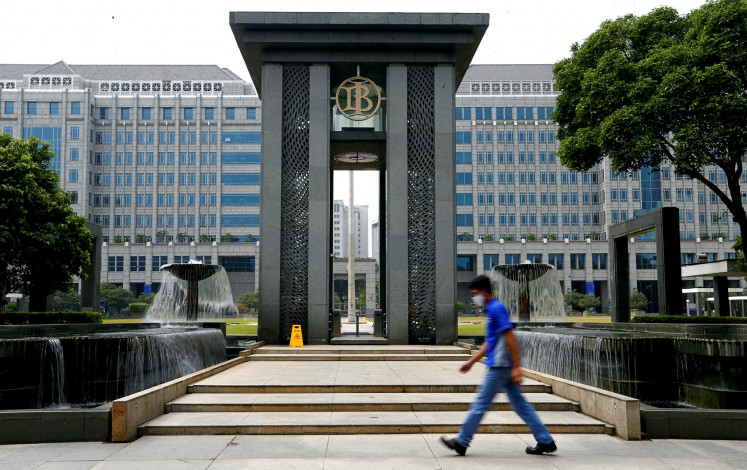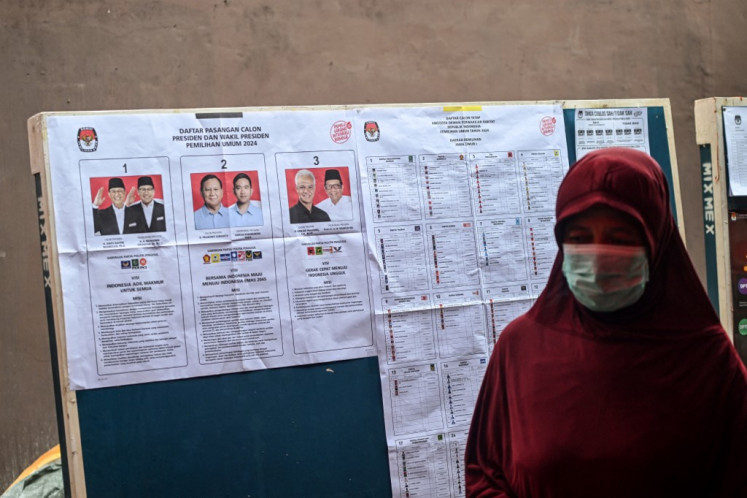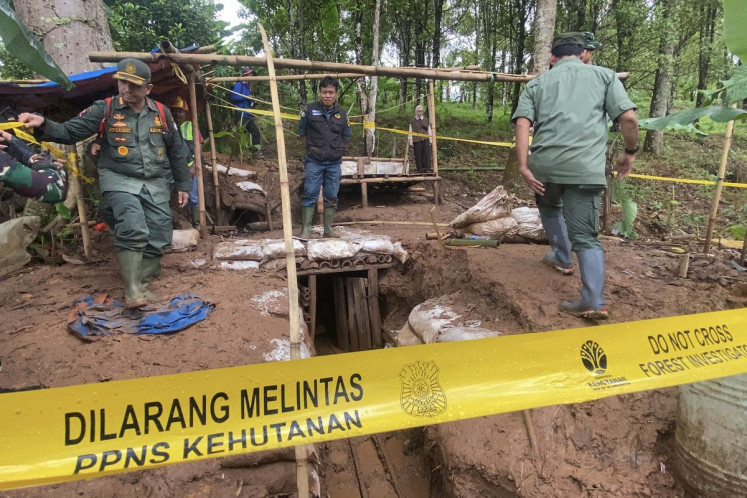Popular Reads
Top Results
Can't find what you're looking for?
View all search resultsPopular Reads
Top Results
Can't find what you're looking for?
View all search resultsTraffic control unit still not running at full tilt
All snarled up: The Traffic Control Center of the Jakarta Transportation Agency monitors city traffic
Change text size
Gift Premium Articles
to Anyone
A
span class="caption" style="width: 510px;">All snarled up: The Traffic Control Center of the Jakarta Transportation Agency monitors city traffic. Despite the sophistication of the facility, the control center lacks the budget and human resources to do its job properly. (JP/Fikri Zaki Muhammadi)
With a shoestring budget, the Jakarta Transportation Agency is developing a fully-automated intelligent traffic system (ITS) that is as sophisticated as those used in developed countries, allowing them to control the city's traffic from a single room.
Inaugurated in 2011 during the tenure of governor Fauzi Bowo, the control center features comprehensive, real-time information about traffic that can be used by commuters.
'The system is expected to provide comfortable commuting, a quick response to every traffic-related event and reduce late schedules,' the agency's traffic control management unit head, I Dewa Gede Soni Aryawan, told The Jakarta Post on Wednesday.
This system, if fully deployed, can reduce the consumption of fuel as it offers information on the efficient routes to travel through its website itsjakarta.com.
The ITS is an integration of information systems, communications technology, transportation infrastructure, on-the-road vehicles and other road users.
Information on accidents, violations and field reports, will be captured by the agency's cameras and processed in the central control room on Jl. Abdul Muis in Central Jakarta.
The results are then displayed for users, including detours caused by flood or demonstrations.
ITS comprises three components, namely the area traffic control system (ATCS), the bus tracking system (BTS), used to track Transjakarta buses, and the transport information system (TIS).
With the ATCS, the agency can immediately fix issues related to traffic light problems and control all traffic signals in the city. As traffic flow changes, it responds by adjusting the green time accordingly.
This system can be used to form a wave of green lights over several intersections when a motorcade passes, for instance.
The ATCS uses the Sydney Coordinated Adaptive Traffic System (SCATS), which has been used in Australia since 1982. Other countries like New Zealand, Hong Kong, Singapore and Shanghai also use this system.
SCATS primarily manages the dynamic ' on-line and real-time ' timing of signal phases at traffic signals, meaning that it tries to find the best phasing for the current traffic situation.
This is based on the automatic plan selection from a library in response to the data derived from loop detectors or other road traffic sensors.
The agency has yet to promote the system as it is still far from the ideal configuration. 'We are still waiting for the best time,' said Soni.
The agency still lacks manpower to full operate the system.
'Although centralized, fixing broken traffic lights still need human resources. We still lack this,' Soni said, adding that drivers active involvement was necessary to report any problems they find on the road to the agency's 24-hour call center.
With the high installation budget required, the city only installed the ATCS at 37 intersections in Jakarta, out of the total of 314 locations necessary, and the bus tracking system in only runs on three corridors out the total of 15.
Yet, this year, another 20 more intersections with ATCS will be added, the cityhaving poured in Rp 20 billion (US$2.04 million) from the 2013 budget.
By the end of 2017, Soni said that the agency hopes to have at least 400 devices, including covering 15 Transjakarta corridors, and an electronic toll collection system.
'But we will evaluate the masterplan again,' Soni said. 'Implementing ITS is expensive, so we should evaluate our studies on the intersections really requiring the system.'
The control center differs to that of the Jakarta Police's traffic management system (TMC).
'Here, we literally manage everything. But not at the TMC, they can only monitor,' Soni said.
In response to the realization of the mass-rapid transit (MRT) megaproject, Soni said that it will likely have its own control center. 'We will likely only monitor their system, to integrate arrival of trains with Transjakarta buses.'










